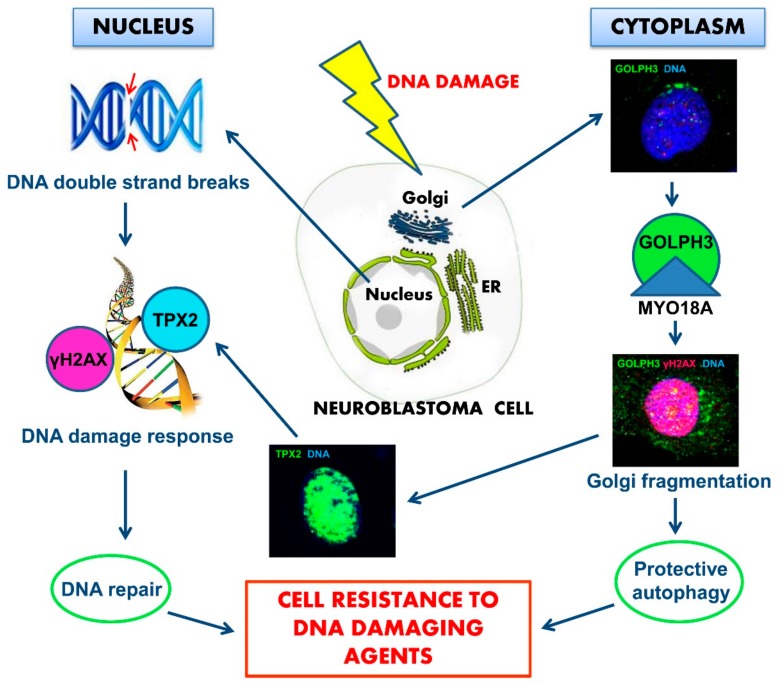Figure 10.
Schematic model of the proposed neuroblastoma (NB) cells resistance to death induced by DNA damaging agents. DNA damage agents induce chromosomal double-strand breaks in the nucleus, where chromatin is physically connected to the nuclear envelope, which is continuous with endoplasmic reticulum (ER). Membrane areas of close apposition connect ER with Golgi apparatus and with the plasma membrane. DNA double-strand breaks generate a signal leading to augmented Golgi protein GOLPH3 interaction with MYO18A, inducing Golgi dispersal and impaired intracellular trafficking with functional consequences for the cell. In the cytoplasm, Golgi fragmentation is accompanied by activation of protective autophagy. In the nucleus, over-expression of TPX2 induces DNA damage response with resulting DNA repair. The combined effects of the two intertwined mechanisms can support enhanced survival and NB cell resistance to chemotherapy.

